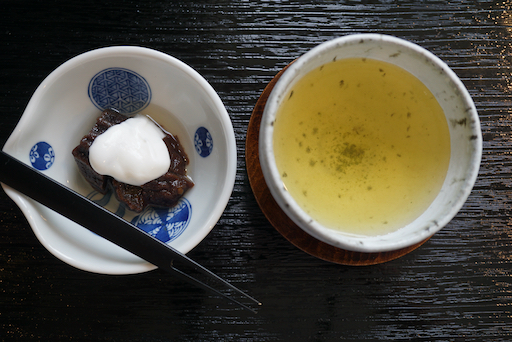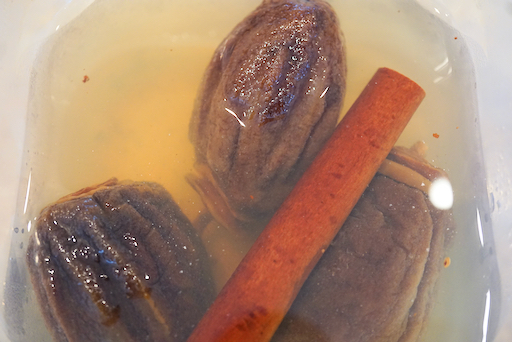I am not sure how this came about but I asked my wife if she had ever tried dried persimmon or "hoshigaki" 干し柿 and her asnwer was "no". There are many ways to convert "shibugaki" 渋柿 or bitter/tannic persimmons to edible sweet persimmons. Certain cultivars will become sweet when ripened. Drying it to make "hoshigaki" is another way to accomplish this. I searched the internet to see if there was a place I could buy "hoshigaki". I found an interesting site called "Japanese taste" that sold Japanese food and other items . Through this site (located in Japan), I bought "hoshigaki" and other Japanese sweets from Hokkaido, Japan 北海道 where I grew up. The hoshigaki I got was called "Ichida-gaki" 市田柿 and is produced in a specific area in Nagano prefecture 長野県. According to their English webpage, this is produced using a very labor intensive and long process including "hand massaging" the fruit after a certain level of dehydration is reached. In any case, this arrived from Japan about 1 week after I ordered it.
4 (four) Hoshigaki
1 cup water
3/4 white wine (I used French dry sauvignon blanc since I had it)
50 grams sugar
1 cinnamon stick
Directions:
Add the water, wine, sugar and cinnamon in a pot and let it boil.
Add the hoshigaki and let it come to boil again and then turn off the flame.
Let it steep and cool to room temperature and store it in the refregerator (should last 2 weeks)






No comments:
Post a Comment
When you post a comment on the post, it does not appear immediately pending moderation.